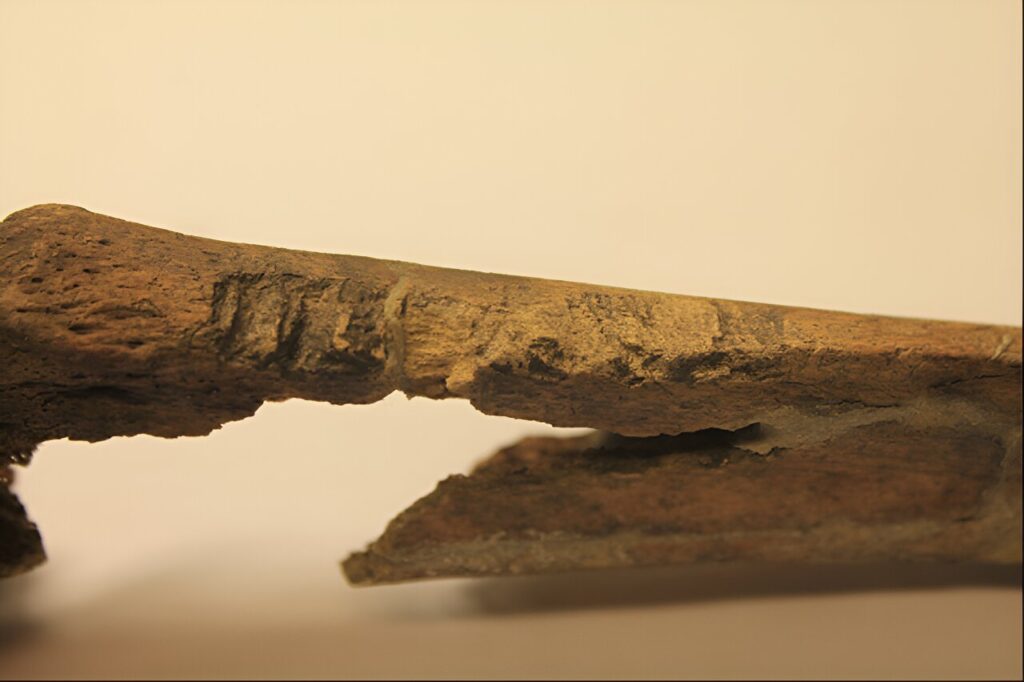For many years, scholars assumed that the rates of violence in Viking Age Norway and Denmark were relatively similar. However, a recent study led by University of South Florida sociologist David Jacobson, along with researchers from Norway and Germany, challenges this notion. The research reveals that interpersonal violence—violent acts not sanctioned by the authorities—was significantly more prevalent in Norway than in Denmark. This new understanding is based on a comprehensive analysis of skeletal remains, weaponry, and historical artifacts, such as runestones, and sheds light on the distinct social structures that influenced violence in these two regions.
A Higher Prevalence of Violence in Norway
The study found that skeletal remains from Viking Age Norway displayed a much higher rate of injuries, indicating that violent encounters were common. About 33% of Norwegian skeletons analyzed showed evidence of healed injuries, suggesting that individuals often survived violent altercations. More strikingly, 37% of the skeletons bore signs of lethal trauma, underscoring the frequent and deadly use of weapons in Norwegian society.
Weaponry also played a crucial role in Norwegian Viking culture. The study identified over 3,000 swords from the Late Iron Age and Viking periods in Norway, compared to just a few dozen in Denmark. This significant difference highlights the prominence of weapons in Norwegian graves, suggesting that they were not only tools of warfare but also symbols of social status. The abundance of weapons further indicates a culture where personal violence and the ability to wield a weapon were integral to one’s identity.

Denmark’s Centralized Control and Systematic Violence
In contrast, the findings from Denmark tell a different story. Danish society during the Viking Age was more centralized, with clearer social hierarchies and stronger central authority. This structure meant that violence was more controlled and often tied to official punishments, such as executions, rather than personal disputes.
Skeletal evidence from Denmark revealed fewer signs of weapon-related injuries, with only about 6% of skeletons showing indications of violent death, primarily from executions. This lower incidence of violence reflects Denmark’s more organized and hierarchical society, where the use of force was monopolized by the ruling elite and exercised in a systematic manner.
The contrast in the use of weapons between the two regions is also evident in burial practices. In Denmark, fewer graves contained weapons, suggesting that social order was maintained through political means rather than personal combat. The construction of large earthworks and fortifications during this period, especially under King Harald Bluetooth in the 10th century, further illustrates Denmark’s capacity for coordinated labor and its more organized social structures.

Explaining the Differences
The research suggests that the differences in violence between Norway and Denmark can be attributed to their distinct social structures. Denmark’s more rigid hierarchy and centralized authority likely reduced the overall levels of interpersonal violence by concentrating the use of force within official channels. In contrast, Norway’s less centralized society experienced higher levels of peer-to-peer violence, as reflected in the greater incidence of trauma found on skeletons.
This study supports the broader theory that stronger authority and steeper social hierarchies can lead to lower levels of interpersonal violence by centralizing and controlling the use of force. The findings also challenge the long-held assumption that Viking Scandinavia was a homogenous region, revealing that Norway and Denmark had distinct social and political environments that shaped their experiences with violence.
Broader Implications of the Study
The research conducted by Jacobson and his team contributes to a growing body of work that examines how social structures influence violence in historical societies. Similar patterns have been observed in other parts of the world, such as the Andes region of South America and certain areas of North America, where less centralized societies also experienced higher levels of violence.
Jacobson hopes that this study will lead to the development of new explanatory models for understanding violence in historical contexts, particularly in periods where written sources are scarce or nonexistent. The interdisciplinary approach used in this research, combining archaeology, sociology, and the study of skeletal remains and runestones, provides a powerful tool for uncovering the social and political dynamics of past societies.
As Jacobson notes, “The findings of these patterns suggest that we are talking of distinct societies in the regions of Norway and Denmark. This is quite striking, as the assumption has been that socially Viking Scandinavia was largely a singular space.” The study not only enhances our understanding of Viking Age violence but also underscores the importance of considering regional differences when studying historical societies.
The study was published in the Journal of Anthropological Archaeology.
Source: University of South Florida
